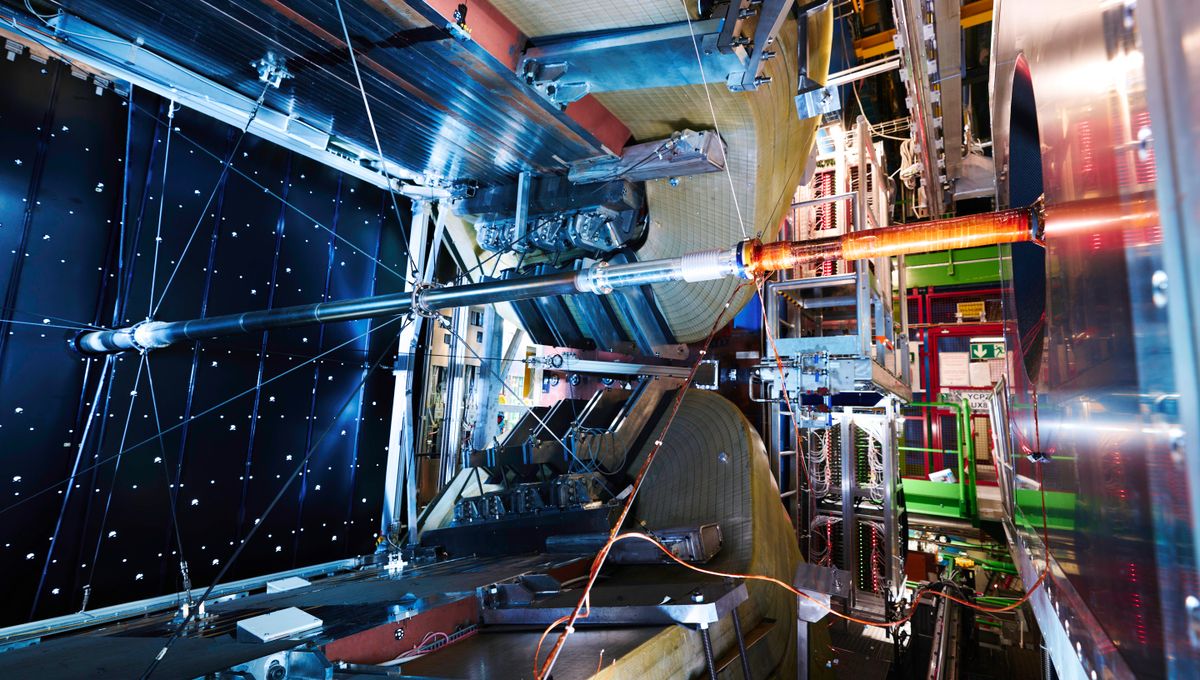Astronomers have made an intriguing discovery in space – suspected antihelium-3 in the form of cosmic rays. The presence of these rare antimatter particles, consisting of two antiprotons and an antineutron joined together, raises questions about their origins.
Physicists believe that this antihelium may be a result of the decay of antihypertriton, a type of antihypernucleus. Exploring such exotic objects seems like a task for the world’s most powerful particle collider, but it has proven to be challenging.
However, at the recent European Physical Society Conference on High Energy Physics in Hamburg, Dr. Hendrik Jage of the LHC beauty (LHCb) experiment reported the observation of approximately 100 hypernuclei in the LHC Run 2 data collected between 2016 and 2018. Most of these hypernuclei were hypertritons, which lasted less than a billionth of a second before transforming into helium nuclei and pions.
Dr. Jage explained that the LHCb was not specifically designed for identifying helium, so a different approach had to be developed to detect the long-lived products and their precursors.
Hypernuclei resemble the nuclei we are familiar with, but they substitute one of the protons or neutrons with a hyperon – a particle that contains at least one strange quark. Hypertriton, for example, consists of a proton, neutron, and a hyperon. The properties of hyperons often result in smaller and more tightly bound hypernuclei compared to conventional nuclei.
Dr. Jage also reported the production of antihypertriton, which has a similar composition but is made of antimatter particles – an antiproton, antineutron, and the antimatter equivalent of a hyperon. This also breaks down into an antihelium nucleus. Although antihypertritons have short lifespans, particle physicists have become skilled at reconstructing the existence of particles they couldn’t directly observe from their longer-lasting products.

Strange quarks are not necessarily any stranger in the conventional sense than all the other members of what is sometimes called the “particle zoo”. However, physicists coined the term “strangeness” to explain the phenomenon of certain particles being easily created but decaying slowly. Strange quarks, along with their regular features, such as a charge a third of that of an electron, provide the strangeness to particles that contain them, including hyperons.
Aside from investigating the appearance of antihypertriton in space, these hypernuclei are of interest because hyperons are believed to exist in the inner core of neutron stars, the densest objects in the universe after black holes. Understanding hyperons and the hypernuclei they form allows for better modeling of the workings of neutron star cores.
There is also a proposal that antihelium-3 may be a product of dark matter particle collisions. If this is true, detecting its presence could help track dark matter and finally uncover its nature. However, to achieve this, we need to understand how much antihelium is coming from other sources, which requires understanding antihypertriton.
The description of hypernuclei may be complex without a physics degree, but the motivation to find them is clear.
The study was presented at the European Physical Society Conference on High Energy Physics 2023. Slides for Dr. Jage’s presentation are available here.
[H/T: ScienceAlert]








